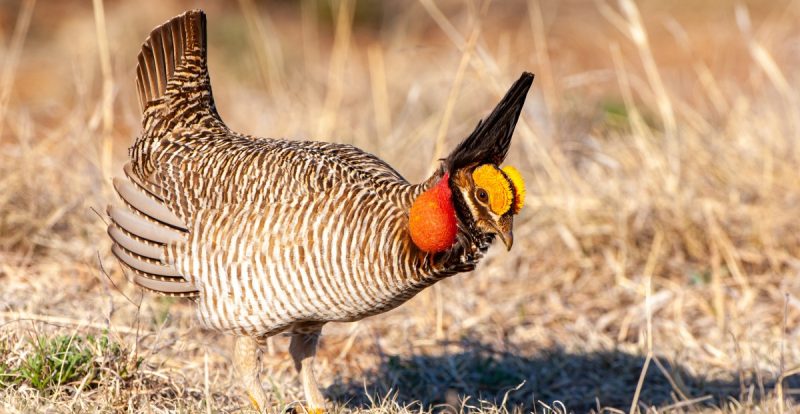
The lesser prairie-chicken, a bird known more for its quirky mating dance than its charisma, is caught in a desperate battle for survival. These fascinating birds, with their booming mating calls and elaborate courtship rituals, once numbered in the hundreds of thousands, even millions. Today, their population has plummeted to a mere 30,000, a stark reminder of the fragility of our ecosystems.
In 2023, they gained crucial protection under the Endangered Species Act, a vital lifeline in their fight against extinction. But now, the Trump administration is attempting to overturn this protection, arguing a technicality in the original listing. This move is seen by many as a direct attack on environmental safeguards, prioritizing oil and gas drilling over the preservation of a species on the brink.
The lesser prairie-chicken’s habitat overlaps with significant oil and gas operations in the southern Great Plains. The Trump administration’s challenge to the Endangered Species Act listing centers on a claim that insufficient evidence supports the categorization of two distinct prairie-chicken populations. This technical argument, if successful, would allow for activities harmful to the birds and their already dwindling grassland ecosystems.
This isn’t just about a single bird; it’s about the precedent it sets. If the administration succeeds in delisting the prairie-chicken, it sends a chilling message that no endangered species is truly safe, particularly those inhabiting areas rich in fossil fuels. The precedent could impact other endangered species, including the dunes sagebrush lizard and even the iconic monarch butterfly, both facing similar threats.
Environmental groups and experts strongly oppose the delisting, emphasizing the well-founded scientific basis for the original listing. They highlight the extensive research and public input considered before the protection was granted. The argument centers on the irrefutable fact that the lesser prairie-chicken is critically endangered and requires protection to survive.
The legal battle is far from over. Lawsuits filed by Texas and industry groups challenge the listing’s validity, and the outcome remains uncertain. While the Trump administration claims an unwavering commitment to conservation, its actions suggest a different priority—one that prioritizes industry profits over species preservation. The fate of the lesser prairie-chicken, and countless other species, hangs in the balance.
This fight highlights the urgent need for robust environmental protections and underscores the interconnectedness of human activities and biodiversity. Saving the lesser prairie-chicken isn’t merely about preserving a unique species; it’s about safeguarding the vital grassland ecosystems that support both wildlife and human communities. The future of these grasslands, and the species they support, depends on the outcome of this critical legal battle.










